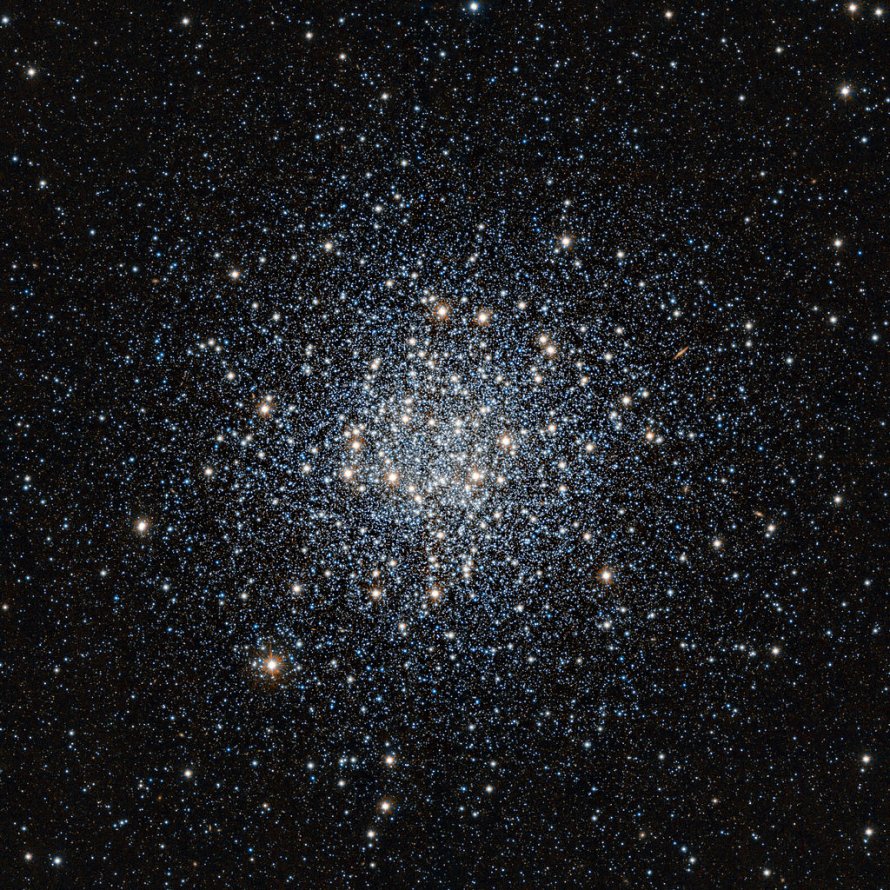M55 (NGC 6809) - Summer Rose Star
Messier 55 (NGC 6809), also known as the Summer Rose Star, is a globular cluster located in the constellation Sagittarius, in the Galactic Center of the Milky Way Galaxy in the Local Group of galaxies. M55 is 17600 light years away from Earth.
M55 is best viewed during late summer, is magnitude 7.4, and can be viewed with binoculars. M55 is 19' in apparent size. For reference, the full moon is 30'.
Observing difficulty: Intermediate
- Name:
- Summer Rose Star
- Type:
- globular cluster
- Constellation:
- Sagittarius
- NGC or IC:
- NGC 6809
- Magnitude:
- 7.4
- Viewing:
- binoculars
- Size:
- 19'
- Distance (light years):
- 17600 LY
- RA:
- 19h 40.0m
- Dec:
- -30 58'
- Season:
- late summer
- Milky Way location:
- Galactic Center
- Galaxy group:
- Local Group
- Messier Marathon #:
- 104
* The naked eye can see up to magnitude ~7-8 objects under ideal dark sky conditions.
A Stellar Gathering in Sagittarius
Among the many wonders of the night sky, the globular clusters, dense balls of stars bound by gravity, stand out as unique celestial objects. They serve as vibrant hubs of stellar activity and carry vital clues about our galaxy's past. One such globular cluster is Messier 55 (M55), located in the constellation Sagittarius. In this article, we will explore the historical background, observational features, and scientific aspects of M55.
Historical Overview
Messier 55 was discovered by French astronomer Nicolas Louis de Lacaille in 1752 during his stay in South Africa, making it one of the earliest objects to be listed in Messier's catalogue. Interestingly, Charles Messier himself was unable to spot M55 from his location in Paris and could only include it in his catalogue based on Lacaille's description.
Astrophysical Characteristics
Located about 17,600 light-years away from Earth, M55 is one of the nearer globular clusters to our solar system. It has a diameter of approximately 100 light-years, making it one of the larger globular clusters known. M55 is somewhat unusual among globular clusters in that it has a rather loose structure, classified as Class XI on the Shapley-Sawyer Concentration Class scale, which ranges from I (most concentrated) to XII (least concentrated).
Magnitude and Size
M55 has an apparent magnitude of 6.3, putting it just beyond the limit of naked-eye visibility under ideal conditions. Through binoculars or a small telescope, it appears as a hazy, faintly glowing patch of light. Its angular diameter is relatively large for a globular cluster, at 19 arcminutes, which is roughly two-thirds the apparent diameter of the full moon.
Scientific Importance
M55's age is estimated to be around 12.3 billion years, making it an ideal astronomical object to study the early universe and the formation of galaxies. Furthermore, M55's relatively close proximity to Earth and its loose structure allow for the study of individual stars within the cluster, providing valuable insights into stellar evolution and dynamics.
Finding and Observing M55
M55 is located in the constellation Sagittarius, which is best visible during the summer months for observers in the Northern Hemisphere. The cluster lies about 4 degrees west of the star Zeta Sagittarii, which marks the tip of the "teapot" asterism, a familiar pattern of stars in Sagittarius.
Under dark skies, M55 can be spotted as a faint, fuzzy spot with the naked eye. However, to resolve its core and the surrounding stars, binoculars or a small telescope are recommended. Larger telescopes reveal the cluster as a relatively large and loose ball of stars, with the brightest stars appearing to twinkle against the fainter glow of the cluster's core.



